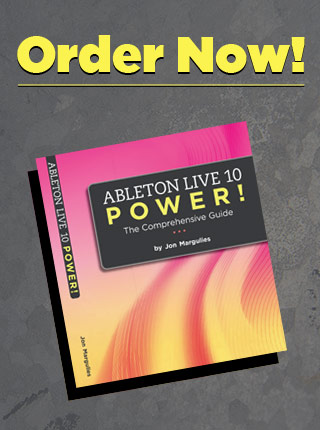We’re almost done with the design of the filter rack we started two days ago – a few more steps, then we can move on to getting it mapped to a MIDI controller and rocking it on a gig. You see, I’m not happy with a one-knob high pass filter – I want it to be switchable to low-pass with the press of a button.
Here’s the spec for how this filter should work:
- A switch on the MIDI controller is used to toggle between high pass and low pass modes
- The same knob is used to sweep the frequency in both modes
- The sweep is always from left to right: in high pass mode, the frequency sweeps up. In low pass mode, the frequency sweeps down.
- When the knob is hard left, the filter is turned off regardless of mode
To expand our design in this way, we need a second filter in a second Chain in the rack. To create a new chain, first show the Chain List as seen below, then drag an Auto Filter out of the Browser and drop it where it says Drop Audio Effects Here. Now, the rack should look like this:
We’re getting to the point where it’s going to get really confusing if we don’t start naming things, so let’s rename the first chain “high pass”, and the second one “low pass”.
For this new filter, map all of the controls the same way we mapped the first filter in the last two tips. (Frequency, Resonance and Device On all mapped to Macro 1.)
At this stage of the game, we’ve made something fairly useless – we’re now processing the signal in parallell with both a high pass and a low pass filter. (Try it out). There are two more important steps to get this thing right – the first is to make sure that only one filter is active at a time.
To do this, we’re going to map both of the Speaker On switches to Macro 2.
Once they’re both mapped, open the mapping browser and use the Invert
Range command in the lo pass Speaker On row.
Now you’ll find that rotating Macro 2
from hard left to hard right toggles you back and forth between the two
filters. On the gig, we’ll have this macro mapped to a button instead
of a knob.
There’s one more step. In the mapping browser, use Invert Range on the Frequency mapping for the Lo Pass filter. Now the low pass filter sweeps down (instead of up) as Macro 1 moves from left to right. OK, this thing is now up to spec and ready to be put into use!
(NOTE: Yes, I know we could have used the Chain Selector to do this thing…but for me this method is a little simpler. Heck, we also could have done the whole thing with a single EQ 8. We’ll explore lots of different methods for doing things this year.)





